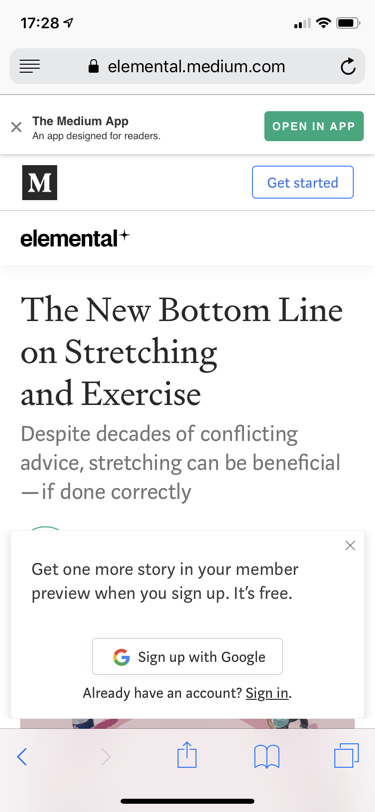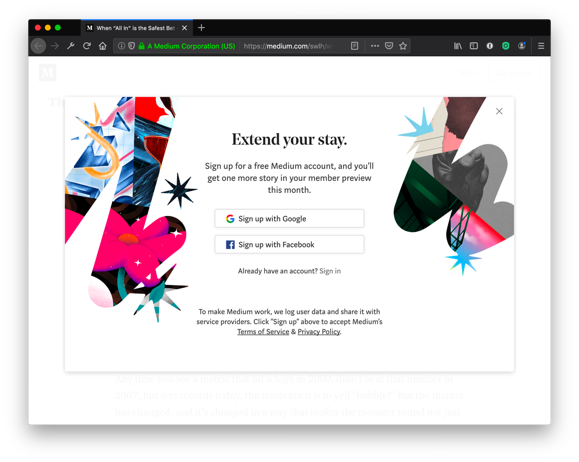Back in early 2013 I got an email inviting me to join the beta for Medium. I can’t remember how or why this happened, but it did.

You should see “contribute” buttons on most of the collections. You will also be able to create collections of your own and customize your Medium profile page.
It sounded interesting, so I signed up, poked around, and loved what I found. There was a built-in community thanks to the Twitter authentication and thematic collections that anyone could submit stories to. It had a seriously nice writing environment that stayed out of your way and let the words flow. What impressed me most of all though was that it had a first class reading experience too.
I was enthusiastic. I published a post which was in response to someone else’s Medium post. The post got more views than anything I’d written in years, partly thanks to that built-in community, and all was well.
Six months passed before I posted again, I don’t write as often as I wish I did. In amongst a massive rant about how websites devalue their own content I was highly complimentary of Medium…
Medium gives so much care and attention to your content that almost anything on there automatically feels of value.
This sadly didn’t hold true for very long though. Through endless attempts to drive “engagement”, Medium kept coming up with new ways to make the reading experience worse. There were sticky sharing bars, buttons overlaying the text you’re trying to read and a steadily increasing number of modal overlays specifically designed to stop you reading articles on Medium.

Despite all this, I really hoped that Medium would work it all out when they introduced Medium Memberships. I believe that content creators need to get paid, I believe that a publishing platform has to have a way to pay its bills and I believe that advertising is cancer on humanity. So I signed up.

For $50 per year I would get the reading and writing experience that I want, uncluttered, easy to use, easy to discover. Every now and then though I might be browsing in a private tab, or in a different browser and I would visit Medium while not logged in. Every time this happened, the experience was worse. There were yet new circles of hell overlaying the text, new hoops to jump through to be able to read an article. This is the experience I was forcing upon anyone who wanted to read my writing. This is the experience faced by anyone who might want to know me better, or hire me, or collaborate with me. Like if IRL your first action on being introduced to someone new was to punch them in the throat. So $50 per year provided an OK reading experience for me and a punch in the throat for anyone unwilling or unable to pay that tax.
In January this year Medium decided to pull third-party access to their publishing API with no warning to those relying on it. It’s a dick-move, and for me it was the final straw – I canceled my Medium Membership.

Medium once promised to be a “community for readers and writers” but they’ve destroyed it for all three nouns in there. The Value of Content article I linked to earlier remains one of the most read things I’ve ever written, but it’s become so ironic that it’s posted on Medium that I set this site up just to have a permanent, readable home for it and anything else I write. Nobody is going to add dickbars, modal overlays, or punitive membership programmes to this site. It’s mine.

Much has been said by many people about the dangers of locking yourself into platforms. All of it I agree with. I’d deleted my Facebook account before Medium had even launched. The dream of a “community for readers and writers” will never be realised as long as there is a cost to the hosting and VC money propping it up. I no longer advise clients to write on Medium because their commercial pressures will inevitably drive them to make it shittier and shittier. Medium has become the Florida of writing platforms, it’s where words go to die.